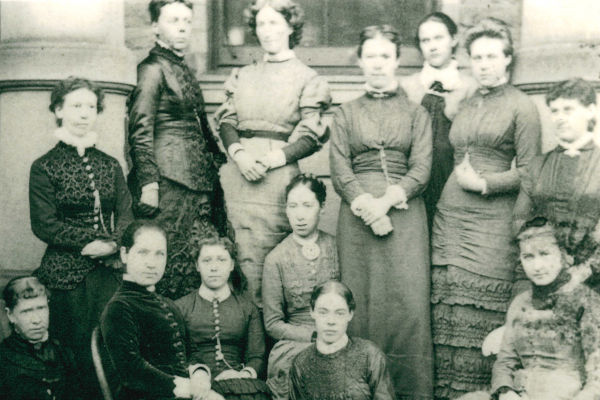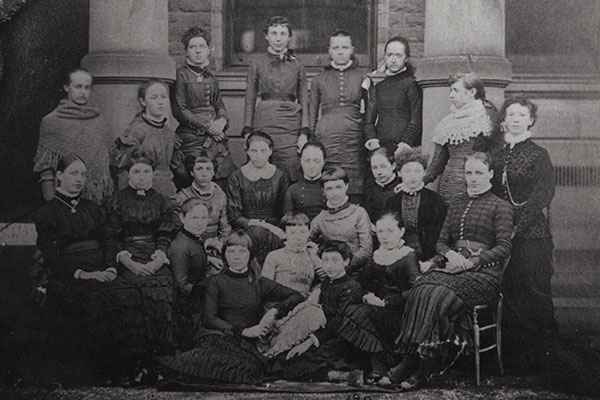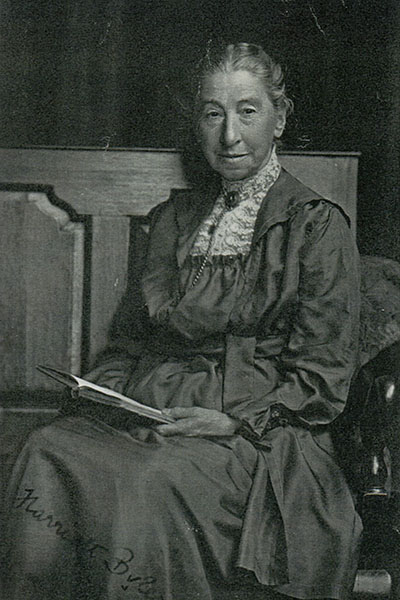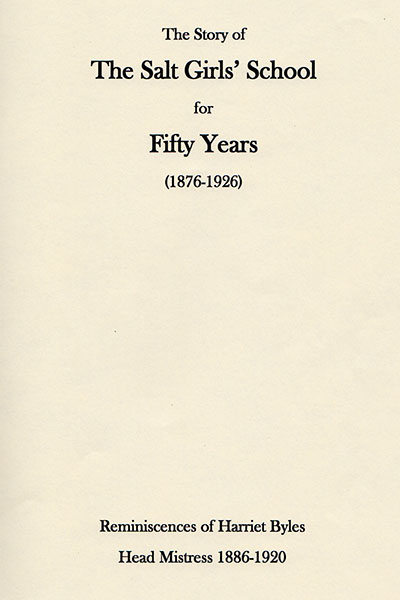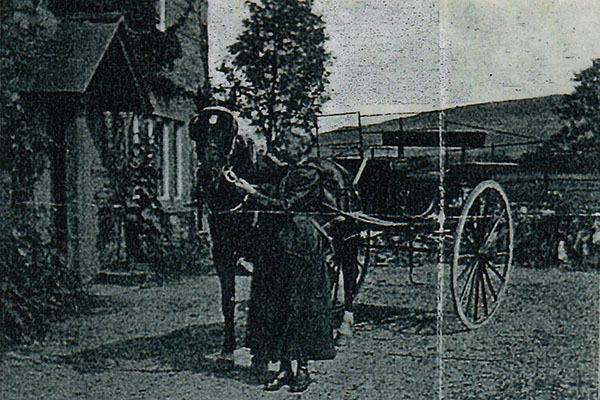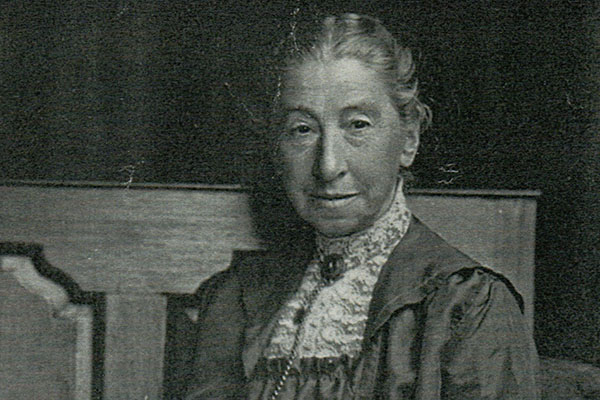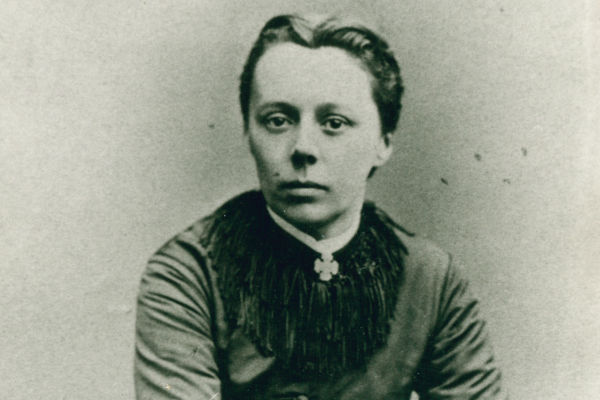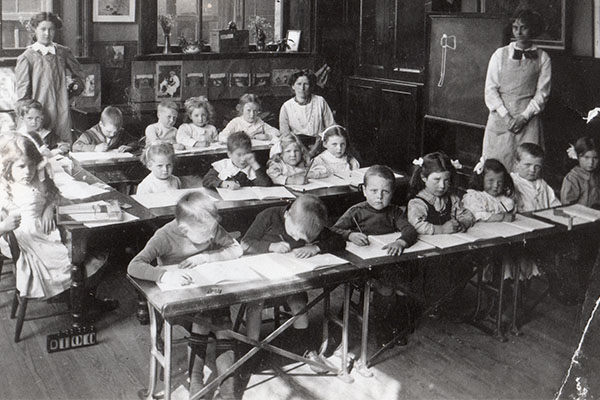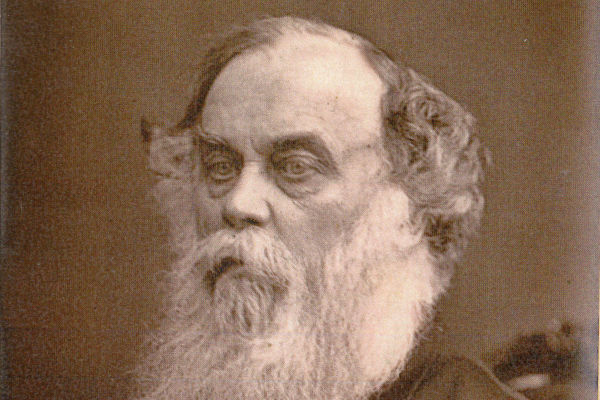A long-serving and progressive head teacher
Harriet Byles was born into a prominent non-conformist, Liberal-supporting Bradford family.
In 1886 she became the second (and longest-serving) headmisstress of the Salt’s Girls High School in Saltaire. Over 34 years she worked hard to give a sound, progressive education to her female students.
In her retirement she could drive around her new village in a pony and trap, a parting gift from her colleagues. But she also found time to write an important, illuminating history of her time at the school.
Becoming headmistress
Harriet was one of ten children of William Byles, the editor and proprietor of the successful Bradford Observer newspaper.
We do not know about Harriet’s own education, but she came to work as a teacher at Salts Girls High School while Medina Griffiths was the headmistress. Harriet was appointed as Medina’s successor as headmistress in 1886.
The Saltaire Collection contains copies of Harriet’s own ‘Reminiscence’ about her years at the school. Her long written piece explains what the school was like and discusses the impacts of the many changes to national education legislation over the period she was at the school.
Expansion of the school
During Harriet’s early years as headmistress the school was relatively small because it received no funding from the local education board or any grants or payments from central government.
Harriet was able to obtain some scholarship awards from the West Riding County Council to enable more girls from poorer backgrounds to enter the school. After the Education Act of 1902, County Major Scholarships became available for arts and science courses for students to progress to university and over time the number of scholarships increased rapidly.
In 1906 a local pupil teacher centre was disbanded and its students were absorbed by Salts Girls High School. This increase in numbers and extension to the curriculum required the premises to be expanded. A second storey was added giving three additional classrooms, a laboratory and a domestic science room. The girls continued to flourish, and a considerable number progressed to university, mainly the nearby University of Leeds.
Inclusive education
Harriet made a great point of ensuring every girl had a part in regular school entertainments for parents, friends and past pupils. There was a strong spirit of comradeship between the girls and between the girls and the school mistresses. Providing liberty combined with trust and confidence in the girls made sure that all developed a high level of individual and corporate responsibility.
Harriet felt that her best contribution to the girl’s welfare was to create an atmosphere in which both mistresses and girls could work together happily and well, and that this would result in all the girls developing their individuality along with acquiring a strong sense of social responsibility.
She supported the views of Dr. Thring, the headmaster of Uppingham (an important private school) who had said that ‘stars correlate night’ meaning that in schools pressing on the clever students to win brilliant successes, the ‘rank and file’ were neglected. Despite a long and honourable roll of ‘old girls’ who had made their mark and filled high positions, Harriet’s approach was to ensure every girl achieved their full potential, whatever their future in life was to be.
Star students
In her written reminiscence, Harriet gave a few examples of her students who had been very successful:
- Edith Dolby who became headteacher of Bedford Girls Modern School
- Sarah Walker who became the Principal of Darlington Training College
- Dr. May Magill who became a Radiographer in a London Hospital
- Dr. Hilda Byles who became head of the Women’s Hospital in Hankow
- Dr. Mary Proudlove who became a medical missionary in India
Other successful pupils included those who became a factory inspector; a tutor at Oxford University; a Librarian at the Chicago University in Luxor Egypt; a Secretary to the League of Nations in Geneva; a Superintendent for Devonshire Education Committee and an important member of the Guild of Help in Bradford.
A well-deserved retirement
After 34 years as headmistress, Harriet retired in 1920 and moved to the North Yorkshire rural village of Austwick.
She returned in September of that year to be presented with her retirement gift – a rather magnificent pony and trap. The Saltaire Collection also contains her letter of thanks.
In retirement she wrote an account of her time at the Salts High School for Girls which is an invaluable source of information on the history of the school and education during this period.
You may also be interested in
Explore our Collection for Harriet Byles
Search and browse items from our Collection connected with Harriet Byles
Medina Griffiths
Read a biography of Harriet’s predecessor as headmistress, Medina Griffiths
More biographies
Discover the life stories of some of the people who built, worked in, lived in, and saved Saltaire.
